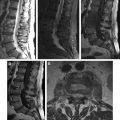Pathologic Basis of Pyogenic, Nonpyogenic, and Other Spondylitis and Discitis 159
Guldal Esendagli-Yilmaz and Omer Uluoglu
Pyogenic spondylitis and discitis are usually seen following a recent infection or surgery. A septic embolus causes an infarcted area within the bone. Pyogenic spondylitis is characterized by edema, vascular leakage, and supportive inflammatory reaction characterized with polymorphonuclear leukocytes. In tuberculosis of the spine, active lesions are characterized by formation of epithelioid granulomas with central caseating necrosis. Mycobacterium tuberculosis can be shown by histochemical stains for acid-fast bacteria or by immunochemistry. In brucella spondylitis, microgranulomatous proliferation composed of histiocytes containing numerous bacilli without caseating necrosis is characteristic. Brucella melitensis can be shown on histochemical Gram stain.
Pathologic Approach to Spinal Cord Infections 163
Tarik Tihan
The pathologic evaluation of spinal cord infections requires comprehensive clinical, radiological, and laboratory correlation, because the histologic findings in acute, chronic, or granulomatous infections rarely provide clues for the specific cause. This brief review focuses on the pathologic mechanisms as well as practical issues in the diagnosis and reporting of infections of the spinal cord. Examples are provided of the common infectious agents and methods for their diagnosis. By necessity, discussion is restricted to the infections of the medulla spinalis proper and its meninges, and not bone or soft tissue infections.
Pediatric Spinal Infection and Inflammation 173
Andrea Rossi
Inflammatory and infectious disorders of the spine in children are less common than in adults, and are usually categorized according to location into (1) those predominantly affecting the spinal cord; (2) those predominantly affecting the nerve roots and meninges; and (3) those predominantly affecting the vertebrae, discs, and epidural space. Magnetic resonance imaging with contrast material administration is of paramount importance for an adequate identification and characterization of these disorders.
Pyogenic Spinal Infections 193
E. Turgut Tali, A. Yusuf Oner, and A. Murat Koc
Spinal infections are a spectrum of disease comprising spondylitis, diskitis, spondylodiskitis, pyogenic facet arthropathy, epidural infections, meningitis, polyradiculopathy, and myelitis. Inflammation can be caused by pyogenic, granulomatous, autoimmune, idiopathic, and iatrogenic conditions. In an era of immune suppression, tuberculosis, and HIV epidemic, together with worldwide socioeconomic fluctuations, spinal infections are increasing. Despite advanced diagnostic technology, diagnosis of this entity and differentiation from degenerative disease, noninfective inflammatory lesions, and spinal neoplasms are difficult. Radiological evaluations play an important role, along with contrast-enhanced MR imaging the modality of choice in diagnosis, evaluation, treatment planning, interventional treatment, and treatment monitoring of spinal infections.
Stay updated, free articles. Join our Telegram channel

Full access? Get Clinical Tree





